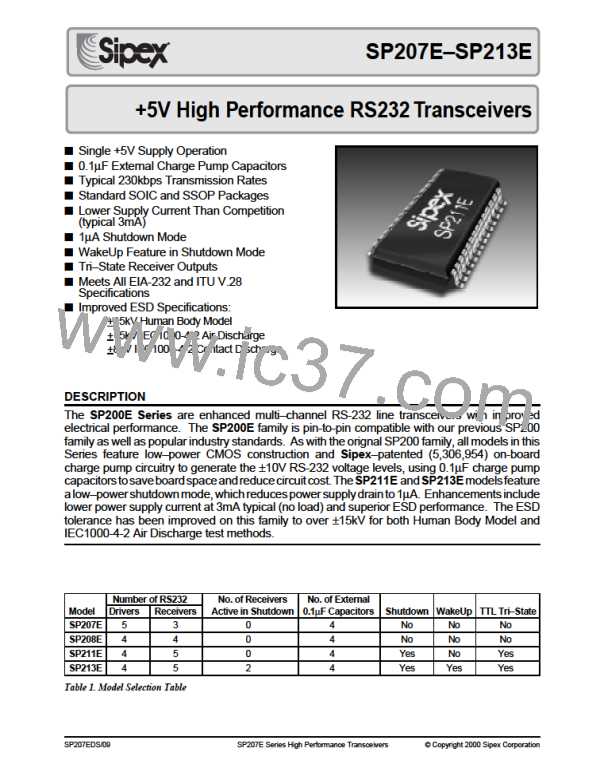Contact-Discharge Module
Contact-Discharge Module
R
R
R
R
S
S
R
R
V
V
C
C
SW2
SW2
SW1
SW1
Device
Under
Test
DC Power
Source
C
C
S
S
R
R
and R add up to 330Ω for IEC1000-4-2.
and R add up to 330Ω for IEC1000-4-2.
S
S
V
V
Figure 8. ESD Test Circuit for IEC1000-4-2
WiththeAirDischargeMethod,anESDvoltageis
appliedtotheequipmentundertest(EUT)through
air. This simulates an electrically charged person
readytoconnectacableontotherearofthesystem
only to find an unpleasant zap just before the
person touches the back panel. The high energy
potential on the person discharges through an
arcingpathtotherearpanelofthesystembeforehe
or she even touches the system. This energy,
whether discharged directly or through air, is
predominantly a function of the discharge current
rather than the discharge voltage. Variables with
an air discharge such as approach speed of the
object carrying the ESD potential to the system
and humidity will tend to change the discharge
current. Forexample,therisetimeofthedischarge
current varies with the approach speed.
30A
15A
0A
t=0ns
t=30ns
t ➙
Figure 9. ESD Test Waveform for IEC1000-4-2
The circuit model in Figures 7 and 8 represent the
typical ESD testing circuit used for all three
methods. The CS is initially charged with the DC
power supply when the first switch (SW1) is on.
Now that the capacitor is charged, the second
switch (SW2) is on while SW1 switches off. The
voltage stored in the capacitor is then applied
through RS, the current limiting resistor, onto the
device under test (DUT). In ESD tests, the SW2
switch is pulsed so that the device under test
receives a duration of voltage.
The Contact Discharge Method applies the ESD
current directly to the EUT. This method was
devised to reduce the unpredictability of the ESD
arc. The discharge current rise time is constant
since the energy is directly transferred without the
air-gaparc. Insituationssuchashandheldsystems,
the ESD charge can be directly discharged to the
equipment from a person already holding the
equipment. The current is transferred on to the
keypad or the serial port of the equipment directly
andthentravelsthroughthePCBandfinallytotheIC.
SP207EDS/09
SP207E Series High Performance RS232 Transceivers
© Copyright 2000 Sipex Corporation
10

 SIPEX [ SIPEX CORPORATION ]
SIPEX [ SIPEX CORPORATION ]